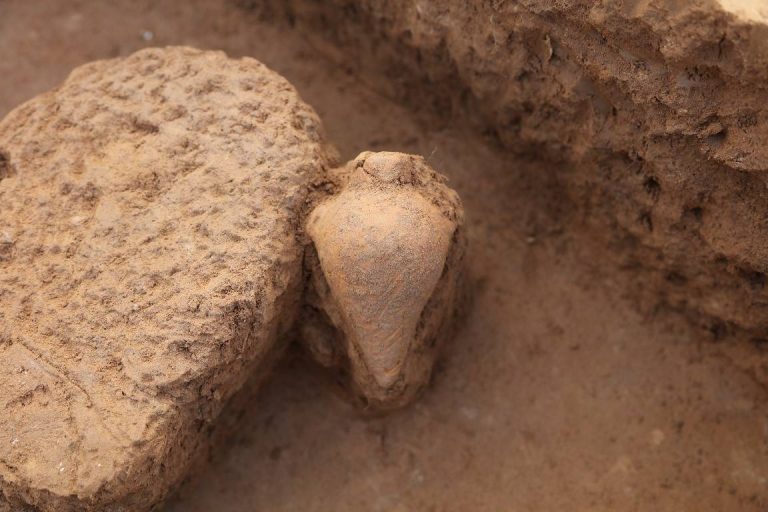Archaeologists have made a fascinating discovery in the Peiligang area of Xinzheng, located in eastern China’s Henan Province—a Neolithic pot, distinguished as the smallest of its kind yet found. This unique vessel, resembling a small-mouthed, pointed-bottomed amphora-like container, is a hallmark artifact of the Neolithic Yangshao culture, dating back approximately 7,700 years.
The significance of this discovery extends beyond its diminutive size. It also holds the title of being the oldest known example of its kind, pushing back the history of this distinctive form by several centuries and offering fresh insights into its origins.
Measuring just 10 centimeters (four inches) in length, the small pot was unearthed during a summer excavation at a Neolithic burial site along the west bank of the Shuangjie River in Peiligang district. The site yielded around 20 new tombs, with grave goods primarily consisting of agricultural tools, including shovel-sickle combinations, along with a few whetstones and stone objects. However, it was Tomb M48 that yielded the remarkable small pot, shedding light on the material culture and burial practices of the ancient inhabitants.

The Yangshao culture flourished in the central regions of the Yellow River between 5000 and 3000 BC. These early agriculturalists cultivated crops, engaged in hunting, and migrated to new settlements as land fertility waned—a lifestyle reflected in the archaeological record of Peiligang. Excavations unveiled evidence of pre-Yangshao peoples, with artifacts such as ostrich egg beaded ornaments, animal bone fragments, oyster shells, pottery shards, and lithic tools.
Of particular significance was the discovery of an early pottery kiln, hinting at the transition from Paleolithic to Neolithic cultures in the region. This kiln sheds light on the technological advancements and cultural shifts that marked this transformative period in human history.
Archaeologists speculate that the small pottery vessel may have been utilized in the production of koji, a type of rice wine fermented using monascus mold (red yeast mold). This fermentation process, known to Paleolithic settlers in the Peiligang region, signifies a sophisticated understanding of food production and preservation techniques during this time.
